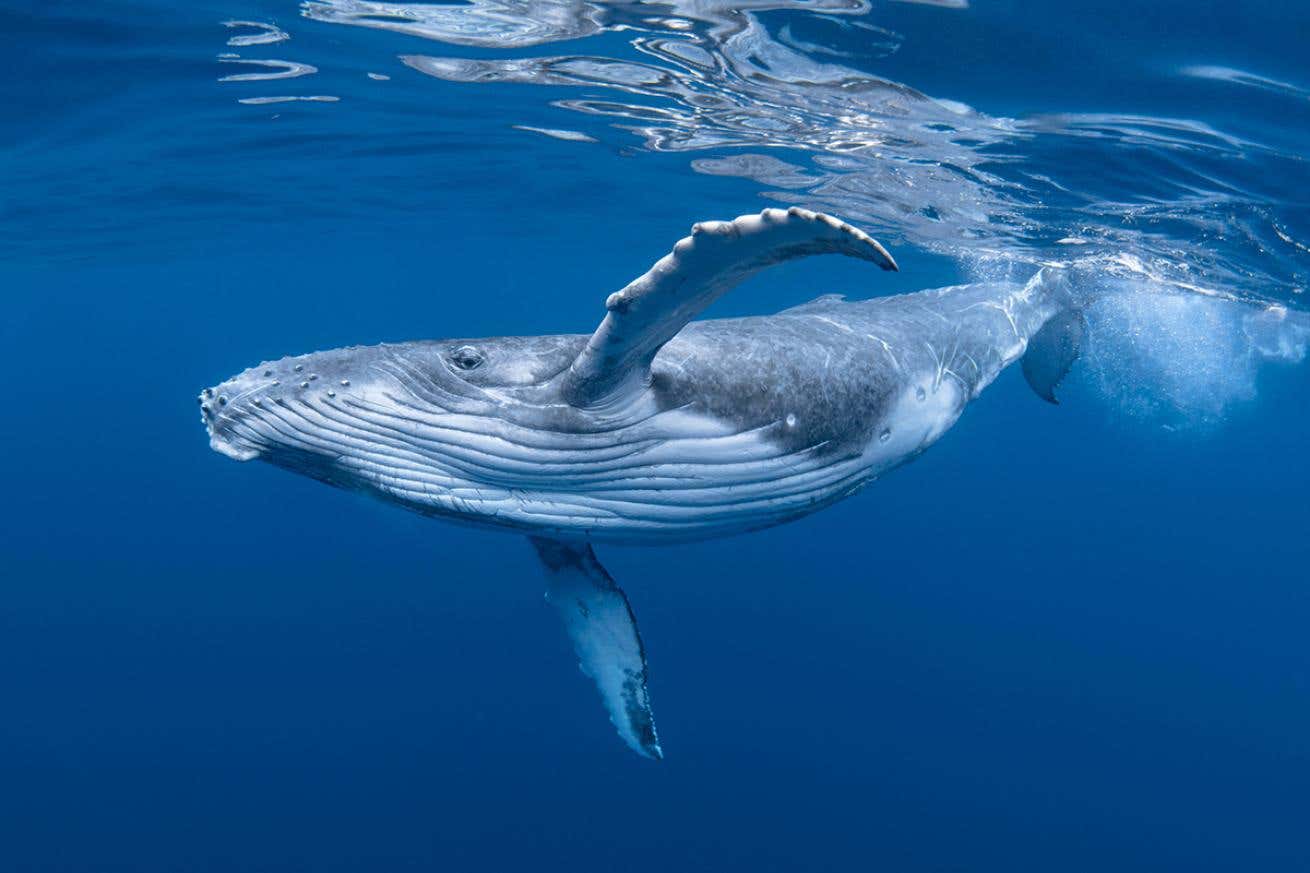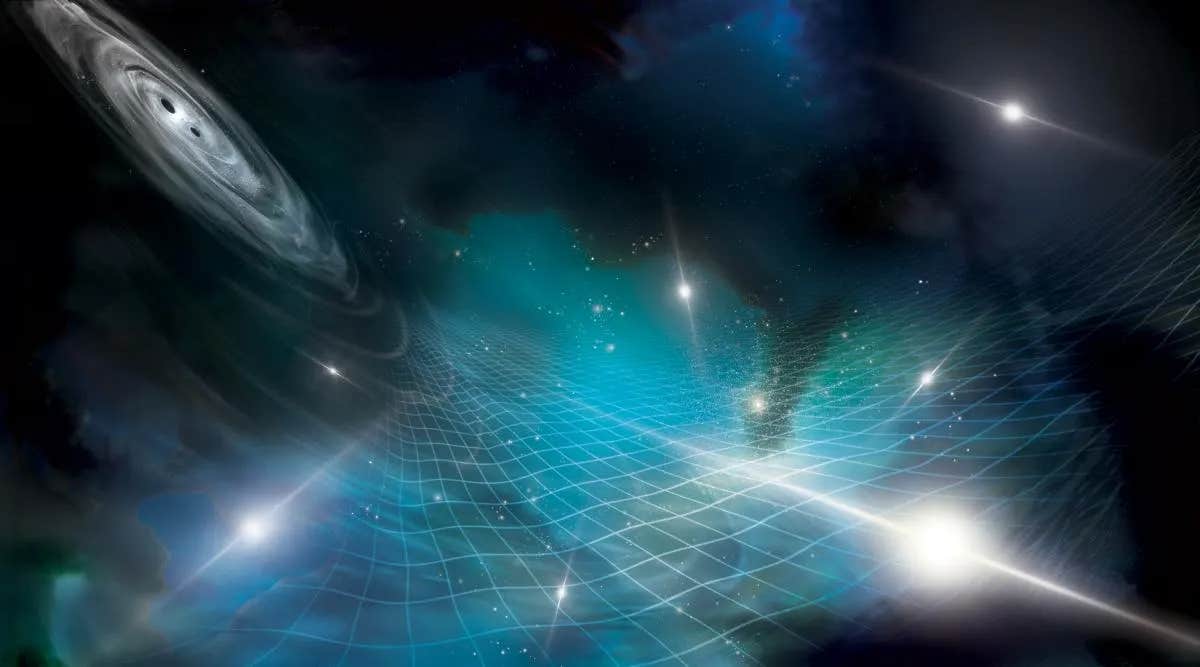Whale feces could be the solution to climate change, study finds
Synthetic whale poop could restore marine ecosystems and fight climate change by enhancing nutrient cycling and carbon sequestration

Synthetic whale poop offers a bold solution to climate change and ocean restoration. (CREDIT: Shutterstock / Craig Lambert Photography)
In the 20th century, industrial whaling decimated global whale populations, reducing them by an estimated 99%. This loss extended beyond the majestic creatures themselves, dismantling a key mechanism for nutrient cycling in ocean ecosystems.
Whales, often referred to as the "engineers of the sea," have a unique role in enhancing marine productivity and mitigating climate change. Rebuilding the ecological balance disrupted by their absence has become an urgent priority for scientists and conservationists.
Whales are vital to the health of ocean ecosystems. Many species feed in the deep ocean, where prey is abundant but conditions are extreme. However, their biological needs compel them to return to the surface, where they expel nutrient-rich feces. These plumes are laden with iron, nitrogen, phosphorus, and other elements that are scarce in surface waters.
According to David King, a chemist at the University of Cambridge, this nutrient transport facilitates the growth of phytoplankton, microscopic plants that form the base of the marine food web.
“Three to four days after whales defecate near the surface, you can often see a green bloom spanning several thousand square kilometers,” King explains. These phytoplankton blooms not only support marine life but also absorb significant amounts of carbon dioxide through photosynthesis.
When the phytoplankton die and sink, some of this carbon is sequestered in the deep ocean, reducing atmospheric CO2 levels. It’s estimated that phytoplankton stimulated by whale feces capture around 22 megatonnes of carbon dioxide annually—equivalent to the emissions of nearly five million cars.
The decline of whale populations has drastically reduced this natural process. With fewer whales cycling nutrients, the ocean’s capacity to sequester carbon and sustain marine life has diminished.
Recognizing the urgency of restoring these functions, marine scientists like Edwina Tanner and her team at the WhaleX Foundation are exploring innovative solutions, including synthetic whale feces.
Related Stories
The WhaleX team aims to replicate the nutrient-rich composition of natural whale poop. Their artificial concoction, primarily composed of nitrogen, phosphorus, and trace elements like silica and iron, is designed to restore ecosystems and boost fisheries while enhancing natural carbon sequestration. Tanner describes the approach as “more holistic,” combining environmental restoration with climate mitigation.
In December 2021, WhaleX conducted their first trial by releasing 300 liters of synthetic feces into the Tasman Sea off Australia. This volume mimics a single whale’s plume. The experiment demonstrated potential, but it also revealed challenges, such as difficulty in tracking phytoplankton growth.
To address these issues, the team is developing a new method using biopods. These five-meter-long cylinders will incubate the artificial feces with seawater, allowing phytoplankton to grow in a controlled environment for several days before being released into the ocean.
“The biopods will help us measure growth rates and carbon capture more accurately,” Tanner explains. By containing the nutrients initially, the team can ensure a higher likelihood of phytoplankton blooms and better understand their ecological impact.
Legal and societal challenges accompany the technical hurdles. While WhaleX has received approval from Australian authorities for local experiments, expanding to international waters is complicated by regulations such as the London Convention. This treaty restricts large-scale ocean fertilization unless there is clear evidence of no harmful effects on marine ecosystems.
Public perception poses another obstacle. “People often associate phytoplankton with harmful algal blooms,” Tanner says. This misconception, along with skepticism toward geoengineering projects, makes gaining public support critical. Tanner emphasizes the need for cautious expansion and transparent communication to build trust.
WhaleX isn’t alone in this endeavor. The Marine Biomass Regeneration project, led by King at Cambridge, is taking a different approach. Instead of liquid solutions, King’s team uses nutrient-rich dust mixed with baked rice husks to mimic whale feces.
The rice husks help the nutrients remain afloat longer, increasing their effectiveness. Their trials will involve volcanic ash from Tonga’s 2022 eruption and powder derived from Greenland’s glacial bedrock. Both materials have shown promise in triggering phytoplankton blooms.
King’s team has set their sights on Tonga and Tuvalu for future trials. Local leaders in these Pacific Island nations have expressed interest in using synthetic whale poop to address declining fish populations.
King is optimistic about the long-term potential, envisioning a return to pre-industrial levels of ocean productivity over the next half-century. “If we can replicate the function of whale feces, we could restore fish, mammal, and crustacean populations to levels seen 400 years ago,” he says.
The ecological and climate benefits of these projects are vast. WhaleX’s ultimate goal is to deploy synthetic feces in 300 low-productivity ocean regions, or "dead zones." This effort could sequester up to 1.5 billion tonnes of carbon dioxide annually, significantly contributing to global carbon reduction targets.
Marine biologist Heidi Pearson praises the initiative, noting its potential to reinvigorate marine ecosystems and combat climate change. “Nature has perfected these processes over millions of years,” she says. “Imitating them is a testament to human ingenuity.”
However, challenges remain. Conservation biologist Joe Roman cautions that large-scale nutrient fertilization could alter deep-sea chemistry in unforeseen ways. “We need thorough studies of ecological responses from surface waters to the ocean floor before scaling up,” he advises.
Tanner acknowledges these concerns and highlights the importance of balancing ambition with responsibility. “We’re committed to rigorous testing and international collaboration to ensure ecological safety,” she says.
Despite the uncertainties, the promise of synthetic whale feces is undeniable. Projects like WhaleX and King’s Marine Biomass Regeneration offer innovative solutions to pressing environmental challenges.
As humanity seeks to mitigate climate change and restore ocean health, these efforts underscore the importance of learning from nature’s intricate systems.
As Pearson puts it, “Every little bit helps. Restoring what we’ve lost can make a big difference for the future.”
Note: Materials provided above by The Brighter Side of News. Content may be edited for style and length.
Like these kind of feel good stories? Get The Brighter Side of News' newsletter.
Joshua Shavit
Science & Technology Writer | AI and Robotics Reporter
Joshua Shavit is a Los Angeles-based science and technology writer with a passion for exploring the breakthroughs shaping the future. As a contributor to The Brighter Side of News, he focuses on positive and transformative advancements in AI, technology, physics, engineering, robotics and space science. Joshua is currently working towards a Bachelor of Science in Business Administration at the University of California, Berkeley. He combines his academic background with a talent for storytelling, making complex scientific discoveries engaging and accessible. His work highlights the innovators behind the ideas, bringing readers closer to the people driving progress.



